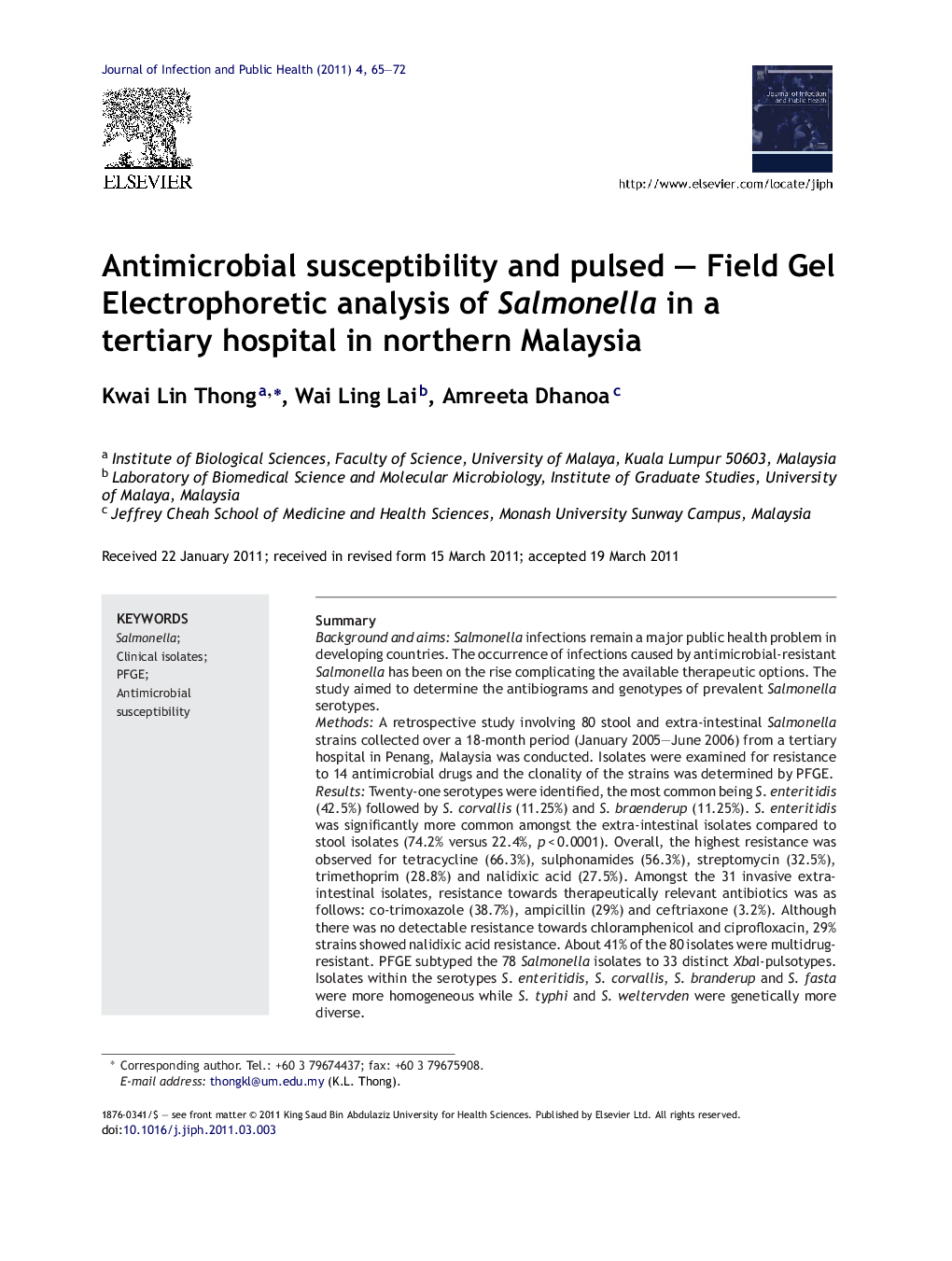| Article ID | Journal | Published Year | Pages | File Type |
|---|---|---|---|---|
| 3406209 | Journal of Infection and Public Health | 2011 | 8 Pages |
SummaryBackground and aimsSalmonella infections remain a major public health problem in developing countries. The occurrence of infections caused by antimicrobial-resistant Salmonella has been on the rise complicating the available therapeutic options. The study aimed to determine the antibiograms and genotypes of prevalent Salmonella serotypes.MethodsA retrospective study involving 80 stool and extra-intestinal Salmonella strains collected over a 18-month period (January 2005–June 2006) from a tertiary hospital in Penang, Malaysia was conducted. Isolates were examined for resistance to 14 antimicrobial drugs and the clonality of the strains was determined by PFGE.ResultsTwenty-one serotypes were identified, the most common being S. enteritidis (42.5%) followed by S. corvallis (11.25%) and S. braenderup (11.25%). S. enteritidis was significantly more common amongst the extra-intestinal isolates compared to stool isolates (74.2% versus 22.4%, p < 0.0001). Overall, the highest resistance was observed for tetracycline (66.3%), sulphonamides (56.3%), streptomycin (32.5%), trimethoprim (28.8%) and nalidixic acid (27.5%). Amongst the 31 invasive extra-intestinal isolates, resistance towards therapeutically relevant antibiotics was as follows: co-trimoxazole (38.7%), ampicillin (29%) and ceftriaxone (3.2%). Although there was no detectable resistance towards chloramphenicol and ciprofloxacin, 29% strains showed nalidixic acid resistance. About 41% of the 80 isolates were multidrug-resistant. PFGE subtyped the 78 Salmonella isolates to 33 distinct XbaI-pulsotypes. Isolates within the serotypes S. enteritidis, S. corvallis, S. branderup and S. fasta were more homogeneous while S. typhi and S. weltervden were genetically more diverse.ConclusionsThe high percentage of multidrug-resistant Salmonella strains is worrying and is of public health concern. PFGE was a useful and discriminative method for assessing the genetic diversity of Salmonellae.
